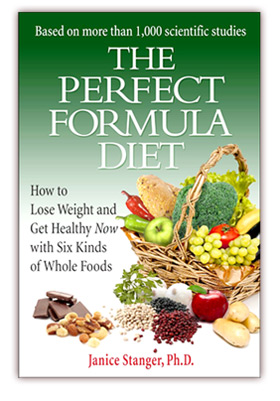
All life on earth is designed to thrive with the sun, or it would not be able to survive. This includes people
Four Health Benefits of Sun, and Why Sunscreen Can Be Dangerous
Life on earth evolved with the sun. Humans are adapted to live and thrive with sunshine – otherwise, people would have long since vanished from the planet. Once you understand the benefits and risks of exposure to sun, you can make informed decisions. How much sun should you get, and when and how can you shield yourself from its powerful rays once you have gotten an optimal amount?
Language lets you know, in an intuitive way, that modern medical and chemical industries exaggerate the dangers of sunshine’s ultraviolet rays and minimize surprising benefits. The word “gloomy,” which matches a day without sun, implies unhappiness, a somber and even threatening outlook, and hopelessness. “Sunny,” on the other hand, matches a bright and cheerful day with a promise of comfort and a
better future to come.
Published research reinforces the meanings of “gloomy” vs. “sunny.” A 2016 study in Journal of Internal Medicine followed 29,518 Swedish women for twenty years. The researchers found that women who spent time in sunshine lived longer. Their article concluded that: “avoidance of sun exposure is a risk factor for death of a similar magnitude as smoking.”
Four Health Benefits of Being in the Sun
Vitamin D is a hormone produced by your body when sunlight of sufficient intensity contacts bare skin. Vitamin D pills can’t totally replace sunshine, any more than vitamin supplements can replace healthy foods. Articles on the health benefits of sun usually focus on vitamin D . Here are four additional benefits -over and above
vitamin D production – of sun exposure:
ONE. Release of nitric oxide from skin: Nitric oxide (NO) is a substance that makes your arteries open wider, thus lowering blood pressure. This lower pressure in turn reduces your risk for cardiovascular disease.
The release of skin NO in response to sunlight may be why, in areas distant from the equator, there is an increased risk of coronary heart disease, blood clots in veins and arteries, and stroke in the winter. This is when the sun is at its weakest in those locations.
TWO. Anti-inflammatory effect and optimization of immune system function: Nitric oxide may also have an anti-inflammatory function, helping to reduce inflammation in various parts of the body, including the liver. Sunlight on skin produces other substances that are anti-inflammatory and may optimize immune system function. Ultraviolet rays directly kill many viruses, and nitric oxide may have antibacterial action.
If the immune system is over-active (as in autoimmune disease), the sun’s ultraviolet rays may suppress the immune system’s too vigorous operation. For example, researchers found that multiple sclerosis patients with higher levels of summer sun exposure had increased brain volume, independent of the sun’s effect on their vitamin D levels.
THREE. Prevention of near-sightedness: Increases in the prevalence of near-sightedness among children in parts of Asia has led scientists to consider ways

Research indicates that being out in daylight, instead of in dim indoor lighting, helps children avoid developing nearsightedness
to keep kids eyesight optimal. Adding just 40 minutes of outdoor time to each school day and encouraging parents to have kids spend more time outside on nonschool days led to a significant reduction in the number of children who became nearsighted over a three year period.
FOUR. Effect on daily hormonal rhythms: Sunlight is well-known for its beneficial influence on production of the hormone melatonin, which is optimally at higher levels in the night than during the day. Additionally, several hormones normally cycle up and down over a 24-hour period, and the effect of sunlight on these hormonal levels should be better studied.
Don’t Overdo Sun Exposure
The main reason that you are told to avoid the sun is because of increased risk of skin cancer from exposure to ultraviolet light. Doctors generally recognize three main kinds of skin cancer. In order from least to most dangerous to your survival, these are basal cell carcinoma, squamous cell carcinoma, and malignant melanoma.
While squamous cell carcinoma is related to cumulative exposure to ultraviolet light over many years, the risk for malignant melanoma is driven in large part by periodic sunburn and concentrated ultraviolet light exposure from tanning beds. Sunburn in childhood is a strong risk factor for malignant melanoma later in life.
So a critical rule of sun exposure is to avoid sunburn and to stay away from tanning beds, even if you don’t get sunburned in these. Be especially careful to protect children from sunburn. This is because malignant melanoma can be life-threatening, and you want to minimize the chance you or your children develop this condition.
Begin sun exposure gradually and slowly. Once your skin begins to change color, end your direct sun exposure for the day. Depending on your skin color, distance from the equator, presence of cloud cover or haze, age, and many other factors, this initial sun exposure may be only a few minutes, or it might be significantly longer. Gradually you should be able to lengthen your time in the sun from day to day without burning.
If possible, cover up your skin with clothes and wide-brimmed hat, instead of using sunscreen, once you have gotten enough sun for each day. Sunscreen is a chemical product with potentially hazardous ingredients.
Sunscreen Risks
Sunscreen is a multibillion dollar industry, with fast-growing sales projected to reach

After getting enough sun (when your skin starts to change color), or after you’ve been out in the sun an hour or two (depending on your skin type, location, and cloud cover, among other factors) with sun-conditioned skin, cover up with a hat, long sleeves, and long pants, if possible. This is preferable to sunscreen when you can manage it
over $11 billion over the next few years. Chemicals to block ultraviolet rays are commonly being added to skin lotions and cosmetics as well.
The nonprofit Environmental Working Group (EWG) independently monitors risky ingredients in sunscreen. Two sunscreen chemicals that EWG advises avoiding are oxybenzone, a hormone disruptor and allergen, and retinyl palmitate, a type of vitamin A that is associated with skin tumors and lesions when sunlight hits it. Spray-on sunscreens are an inhalation risk. These hazards are reason to avoid sunscreen chemicals when shade, clothes, and a hat are practical alternative to keep off excessive sun.
If you enjoyed this article, you may want to learn more about vitamin D in this post.
Intrigued? Now you can use our Whole Foods Blog Finder to target informative, fun postings on whole foods, plant-based diets. Quick information at no cost!
Post written by Janice Stanger, Ph.D. Janice authored The Perfect Formula Diet: How to Lose Weight and Get Healthy Now With Six Kinds of Whole Foods. This book recommends an easy, plant-based eating plan designed to achieve optimal health.
Tags: sun, sunburn, sunscreen, sunshine, ultraviolet rays, vitamin D







